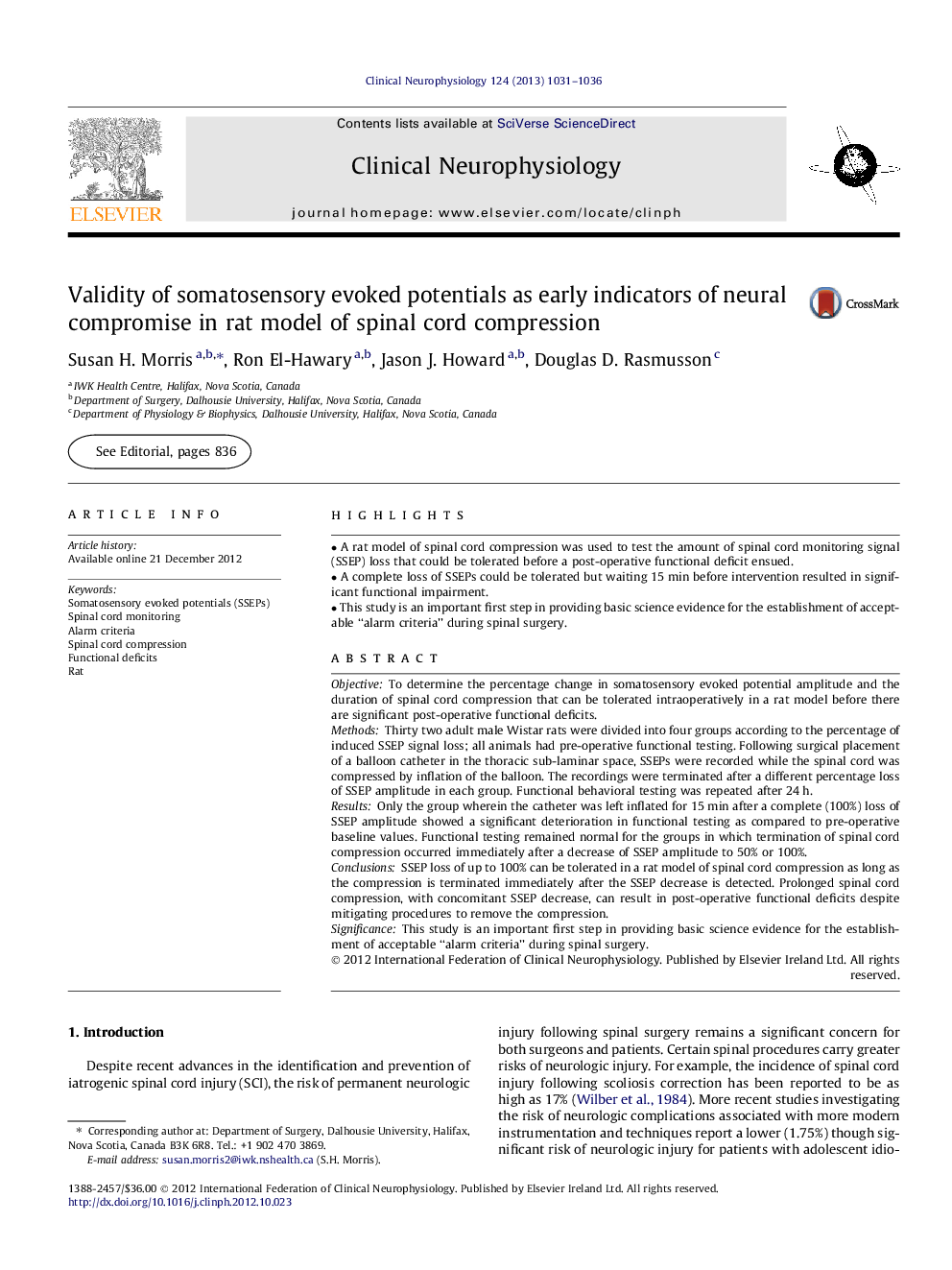| Article ID | Journal | Published Year | Pages | File Type |
|---|---|---|---|---|
| 3044343 | Clinical Neurophysiology | 2013 | 6 Pages |
ObjectiveTo determine the percentage change in somatosensory evoked potential amplitude and the duration of spinal cord compression that can be tolerated intraoperatively in a rat model before there are significant post-operative functional deficits.MethodsThirty two adult male Wistar rats were divided into four groups according to the percentage of induced SSEP signal loss; all animals had pre-operative functional testing. Following surgical placement of a balloon catheter in the thoracic sub-laminar space, SSEPs were recorded while the spinal cord was compressed by inflation of the balloon. The recordings were terminated after a different percentage loss of SSEP amplitude in each group. Functional behavioral testing was repeated after 24 h.ResultsOnly the group wherein the catheter was left inflated for 15 min after a complete (100%) loss of SSEP amplitude showed a significant deterioration in functional testing as compared to pre-operative baseline values. Functional testing remained normal for the groups in which termination of spinal cord compression occurred immediately after a decrease of SSEP amplitude to 50% or 100%.ConclusionsSSEP loss of up to 100% can be tolerated in a rat model of spinal cord compression as long as the compression is terminated immediately after the SSEP decrease is detected. Prolonged spinal cord compression, with concomitant SSEP decrease, can result in post-operative functional deficits despite mitigating procedures to remove the compression.SignificanceThis study is an important first step in providing basic science evidence for the establishment of acceptable “alarm criteria” during spinal surgery.
► A rat model of spinal cord compression was used to test the amount of spinal cord monitoring signal (SSEP) loss that could be tolerated before a post-operative functional deficit ensued. ► A complete loss of SSEPs could be tolerated but waiting 15 min before intervention resulted in significant functional impairment. ► This study is an important first step in providing basic science evidence for the establishment of acceptable “alarm criteria” during spinal surgery.
